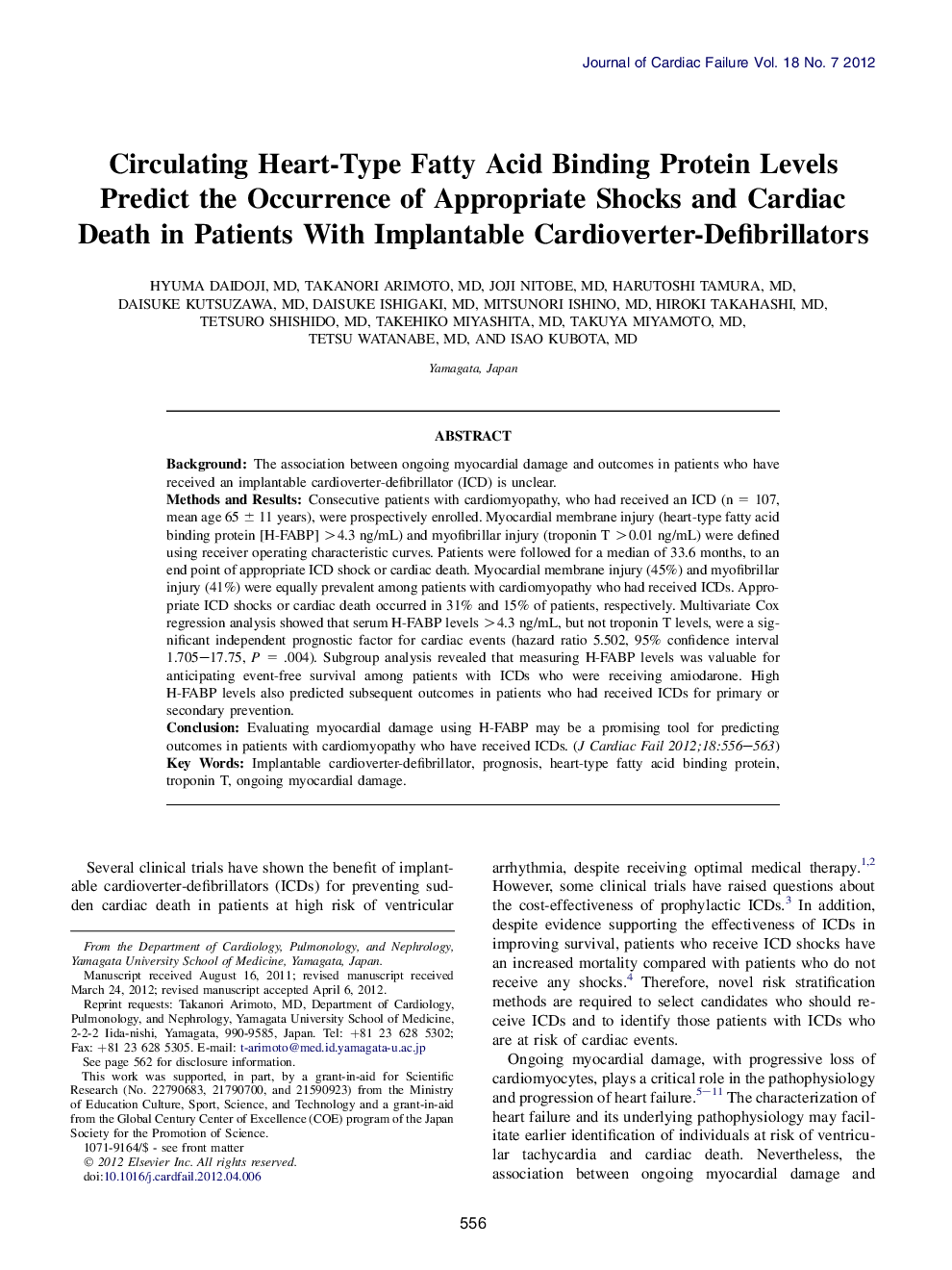| Article ID | Journal | Published Year | Pages | File Type |
|---|---|---|---|---|
| 2960607 | Journal of Cardiac Failure | 2012 | 8 Pages |
BackgroundThe association between ongoing myocardial damage and outcomes in patients who have received an implantable cardioverter-defibrillator (ICD) is unclear.Methods and ResultsConsecutive patients with cardiomyopathy, who had received an ICD (n = 107, mean age 65 ± 11 years), were prospectively enrolled. Myocardial membrane injury (heart-type fatty acid binding protein [H-FABP] >4.3 ng/mL) and myofibrillar injury (troponin T >0.01 ng/mL) were defined using receiver operating characteristic curves. Patients were followed for a median of 33.6 months, to an end point of appropriate ICD shock or cardiac death. Myocardial membrane injury (45%) and myofibrillar injury (41%) were equally prevalent among patients with cardiomyopathy who had received ICDs. Appropriate ICD shocks or cardiac death occurred in 31% and 15% of patients, respectively. Multivariate Cox regression analysis showed that serum H-FABP levels >4.3 ng/mL, but not troponin T levels, were a significant independent prognostic factor for cardiac events (hazard ratio 5.502, 95% confidence interval 1.705–17.75, P = .004). Subgroup analysis revealed that measuring H-FABP levels was valuable for anticipating event-free survival among patients with ICDs who were receiving amiodarone. High H-FABP levels also predicted subsequent outcomes in patients who had received ICDs for primary or secondary prevention.ConclusionEvaluating myocardial damage using H-FABP may be a promising tool for predicting outcomes in patients with cardiomyopathy who have received ICDs.
